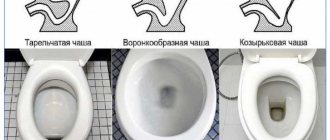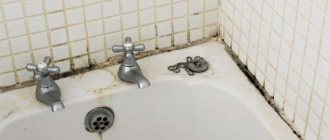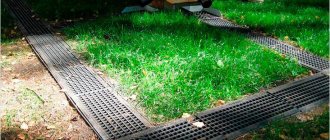Nowadays there is a toilet in any private house or apartment. Manufacturers of this plumbing equipment are constantly improving the design, inventing new components. As a result, various shapes and dimensions of toilets and cisterns have been created with their own characteristics of draining and filling with water. Sometimes breakdowns occur that reduce the quality of the drain. To solve a problem, you need to find the cause in time.
Efficiency of the drain system
The cause of a malfunction in a new toilet is not difficult to understand if you understand the features of plumbing and its design. The toilet is a bowl with a flushing container connected to it. The liquid is collected in a container. After pressing the trigger, the liquid rushes down.
A variety of materials are used to make a tank, but they are usually made of earthenware or cast iron. The choice of these materials is due to reliability. For some models, the tanks are made of plastic.
Professional plumbing cable
This is a special plumbing tool, which is a cable with a handle at one end and a nozzle at the other. There are many types of cables (cable, spring, rigging, tension, etc.) with a diameter of 6 to 16 mm and a length of up to 60 meters.
For residential needs, a five-meter Ø9 mm cable is sufficient. The nozzle at its end can be in the form of a weight (for breaking through) or a spiral (for removing blockages)
Advice! It’s better to use two people to clear clogs using a cable – it’s more convenient to manipulate the tool.
The plumbing cable is used as follows:
- Lower the end with the nozzle until it stops in the toilet drain. Next, to push the cable into the hydraulic seal, begin to rotate its handle clockwise.
- By rotating and pushing the cable, move it to the maximum depth to the plug.
- Using shock movements, they break and push deposits into the riser, or catch and pull the debris out.
Scheme for moving the cable in the toilet
Advice! Before removing the cable from the toilet, place unnecessary rags on the floor. The cable itself must be wiped with a cloth and any detergent.
If the problem of blockages in the toilet occurs frequently, then you should think about purchasing such a tool:
- Single-pipe and two-pipe heating system Leningradka: diagram, installation, video
- How to disassemble an old cast iron battery
- Connecting sections of heating radiators to each other
- Is it possible to paint hot radiators with paint and enamel?
Reasons why the toilet doesn't flush well
The ways to solve the problem and the sequence of actions largely depend on what exactly caused it. Often the reason lies in the sewer outlet pipe. Due to its blockage, wastewater cannot pass through. In another case, the problem is hidden in the drain tank.
Sometimes, due to the breakage of the hollow plastic bulb, a little liquid accumulates in the tank. Defects appear in the vessel, due to which it fills with water. As a result, it sinks deeper into the water than necessary.
A metal lever in the form of a rod is used to secure the vessel. It bends when used. This causes malfunctions in the opening and closing system of the outlet. If the outlet valve is not working properly, the tank does not fill completely. And the outlet often becomes clogged with suspended matter present in the water. Sometimes the sealing parts of the release device wear out or the button in the reservoir cap breaks.
It is not difficult to understand why the water in the toilet does not flush:
- When a pipe becomes clogged during flushing, water accumulates in the toilet bowl. Its level rises greatly above normal, and leakage occurs slowly.
- The lack of water in the tank is easily determined by a simple inspection.
- The failure of the bulb is determined after opening the lid of the drain tank and inspecting the mechanism for correct operation.
- Breakage of the exhaust valve is determined after moving the lever holding the bulb to different positions. During normal operation, the top opening remains completely closed and water flows freely from below.
conclusions
So, based on the above, we can conclude what kind of cat litter can be flushed down the toilet?
- The sewer can only “absorb” wood, paper and vegetable fillers, and it is not recommended to empty the entire tray at once - you need to wash it off in small batches.
- Can clumping litter be flushed down the toilet? Mineral and silica gel are clumping types. Mineral - can be washed off, but only a small portion with feces. But silica gel - absolutely not, just throw it in the garbage chute.
Usually the packaging contains the manufacturer's recommendations for disposal of this product. If you follow these rules, you will not face any blockages.
Share on social media networks:
What to do if the toilet doesn't flush well
If the toilet does not flush the first time, sometimes the reason lies in poor-quality tap water with a large amount of mineral salts. Gradually they accumulate on the working mechanisms and the inner walls of the container. Due to the small size of the drain holes, lime deposits often block them, preventing liquid from passing through.
To eliminate this problem, chemical cleaning of the inner walls of the container is carried out. The water is drained from the tank, leaving no more than 1 liter of liquid. Then use one of the following:
- A mixture of 0.5 liters of table vinegar and the same amount of borax. The solution is kept for 2 hours and drained.
- A solution of water and phosphoric acid at a concentration of 5%. It is kept in the container for 15 minutes and drained.
- Citric acid in the amount of 40 g is poured into the tank and left for 8 hours.
The walls of the container are cleaned immediately using one of these methods, but to wash the working mechanism you need to perform this cleaning several times. Acidic cleaning products cannot be used, as they cause plastic and rubber parts to become unusable.
Important! Before cleaning internal parts, protect your hands and respiratory organs by wearing rubber gloves and a respirator.
To prevent the settling of lime particles in the future, you need to install a special filter at the entrance to the tank. If this cannot be done, special tablets are periodically placed in the tank.
Insufficient water level in the tank
If the water does not drain well, there may not be enough water in the tank. There are several ways to fix this problem:
- If the valve closes with the float very early, tighten the screw, setting it to the desired position.
- If water constantly flows down due to debris, dismantle the fittings and clean them.
- If the rubber bands are worn out and have lost their elasticity, they are replaced with new ones.
Toilet clogged
When the liquid pressure is normal, but the water does not flow into the sewer, the reason lies in a clogged toilet or drain pipe. Then you need to take action to remove the obstacle. The easiest way to clean a toilet is with a regular pneumatic plunger. This device generates excess pressure, due to which the obstacle is pushed through. But this cleaning method does not always give the desired effect.
Acid and alkaline agents are used to remove accumulated organic matter. They are used according to the instructions. Usually the drug is placed or poured inside. After some time, the clog dissolves and the liquid comes out. For better effect, this method is combined with mechanical cleaning.
The best way to clean a toilet is with a plumbing cable. It is inserted into the hole and pushed further into the sewer with rotational movements. If an obstacle occurs, the device is rotated several times and pulled out. The plug catches on the cable and comes out with it. After cleaning, the toilet is flushed with a large volume of water.
If other methods do not bring results, roll a rag into a tight rope and tie the ends with a rope. The structure is inserted into the toilet hole and rotated, clearing the blockage. As a result, strong pressure is generated, eliminating the plug. Having completed the cleansing, the toilet is flushed.
Hydraulic cleaning is performed when the blockage is located away from the toilet. To do this, insert a hose into the hole and turn on the hot water. It clears out the blockage. This method cannot be used if the water level in the toilet is high.
What cleaning products are there?
Remedies and methods for toilet blockages can be divided into the following groups:
- 1. Chemicals and rinsing.
- 2. Mechanical means without pipe examination
- 3. Deep mechanical means (plumbing cables)
- 4. Technical. Dismantling of corrugations, a section of pipe, complete or partial replacement of the pipeline. In such cases, it is better to call emergency services.
The common goal of all methods is to clean the clogged section of the pipe and remove contamination.
Preventing poor flushing
The toilet often becomes a place where foreign objects accumulate. Therefore, it is important to monitor its condition all the time so that drainage problems do not occur again. To do this, it is important to remove foreign objects from the toilet at all times.
Regularly chemically clean the tank and the bowl itself. For this purpose, household chemicals are used. You can clean the sewer mechanically using a plumbing cable.
Regularly open the tank lid and check whether the fittings are working correctly. Breakdowns in this part of the device are easier to prevent than to fix.
Localization of the blockage
In order to clean the toilet yourself, you need to find the clog yourself. Watch how water flows from the bathtub or washbasin sink. If no failures are observed, then there is a blockage in the toilet siphon, the cuff that connects it to the sewer or outlet. Localization of blockage in a common pipe is expressed in the form of stagnation of water in the bath.
When there is a blockage in the riser, wastewater begins to gush out of the toilet. In this case, it is impossible to remove a clogged toilet with your own hands. Only professionals can cope with such a situation. It is urgent to call plumbers.
Reasons for poor flushing in a new toilet
Usually, a new toilet does not flush properly due to installation errors. To correct them, carefully study the product data sheet, where they find the recommended fluid level in the tank. To do this, shut off the liquid supply, open the tank and drain the water. After this, inspect the drain valve tube. If the fluid level is below normal, make adjustments.
Fill the tank with a measuring container, pouring into it the volume of liquid recommended by the manufacturer. Make a mark on the wall with a permanent marker. Then open the water supply and see at what level the float stops. If it does not correspond to the mark, make an adjustment.
To ensure that the toilet always flushes dirt well, it is important to check it regularly and perform preventative cleaning. Most breakdowns that occur with flushing can be resolved on your own. If this cannot be done, it is better to call a plumber.
How do you like the article?
How to avoid urinary stone formation
We have no magical secrets. To prevent minerals from depositing on ceramics, you need to:
- Clean the toilet regularly with a brush and household chemicals. Spend 5 minutes cleaning it at least twice a week. For many years, your plumbing fixtures will delight you with their well-groomed appearance and pristine whiteness;
IMPORTANT:
urinary stones do not form with regular, conscientious cleaning.
- Rinse well with water. Poor flushing is typical for people who are too economical and for small children. Children need to be taught how to use the toilet correctly. Adults themselves should understand that saving water may make it necessary to clean the plumbing fixtures from mineral deposits more often;
- Care for ceramics properly, do not remove plaque with a knife or abrasive pastes. Any roughness and microcracks on the surface of the ceramic become a site for the deposition of salts, rust and urinary stone. They eat into uneven surfaces and plumbing fixtures irreversibly lose their shine, gloss, and cleanliness.
Preventative toilet cleaning products
In the departments of household chemicals there are many products for the prevention of mineral deposits. They are placed in the flush cistern. Each flush of water washes the walls of the toilet with a solution that removes deposits. An additional advantage of such reagents is the removal of unpleasant odors. Here is a list of inexpensive drugs for removing urinary stones:
- Bref;
- Domestos;
- Chirton.
Irrigation with water from a tank, saturated with chemicals, constantly dissolves mineral deposits, so you can clean your plumbing less often. Limescale and rust do not have time to build up and harden. Each flush of water enriched with cleaning chemicals helps maintain the cleanliness of the toilet. The products are recommended for daily care of ceramic sanitary ware and the prevention of urinary stones.
Household cleaning products.
There is a large selection of toilet bowl cleaning products on sale - gel, abrasive and acidic. Each family decides how to clean the plumbing, trying different options. Our task is to suggest the advantages, capabilities and side effects of popular household chemicals:
- The walls of the toilet are mechanically cleaned with powdered detergents and pastes. Examples of such household chemicals are Pemolux and Sorti. The general recommendation for use is not to overdo it with the applied force, so as not to damage the surface of the ceramic. Our company's cleaners do not recommend using them to clean new expensive plumbing products. We often see the results of such amateur cleaning. One unsuccessful attempt to clean it with an abrasive paste - and the toilet is hopelessly damaged. Moreover, the urinary stone was and still is, and the surface of the ceramics is seriously damaged.
- Semi-professional gel products for cleaning plumbing fixtures in toilets include WS-GEL, packaged in 760 and 5 liters. They are good for cleaning mineral deposits. The product keeps the walls and drain pipe clean. The advantage of the gel is its speed. It is applied to the walls of the toilet for one and a half minutes. Then use a brush to gently rub the ceramics and rinse with clean water. After several procedures, urinary stone deposits and limestone deposits completely disappear. The cost of the reagent is affordable and the quality of cleaning is high.
- A large group of toilet bowl cleaners are made with the addition of hydrochloric acid. Russians actively use them. The results of using acidic cleaning products, such as Cillit Bang, are satisfactory to consumers. The only disadvantage noted by the target audience is the high price. Looking for an inexpensive, effective product to clean the inside of your toilet fixtures? Pay attention to Domestos. It does an excellent job of removing mineral deposits.
TRY IT AND YOU WILL BE SURE THAT AN INEXPENSIVE PRODUCT CAN BE EFFECTIVE AND USEFUL IN YOUR HOUSEKEEPING.
When to turn to professionals
If none of the methods presented above provide the desired result, it is advisable to contact professional companies that specialize in solving such problems. Using modern equipment, experienced plumbers will be able to effectively deal with blockages of any complexity in a short period of time.
Turning to professionals will help you get rid of complex blockages in your sewer system.
How to Clear a Toilet Paper Clog Using Baking Soda
You can remove operational blockages using regular baking soda, which in most cases is available to every housewife.
- Dissolve half a pack of soda in warm water.
- Pour into the toilet drain hole.
- After 2 hours, rinse the toilet with water.
There is a more effective way using baking soda. Since the soda solution is alkaline, if you heat it in a frying pan, it will become more active and will be better able to cope with the blockage. For this you will need:
- 150 g of baking soda (about 5 heaped tablespoons);
- 200 ml water;
- pan.
Step-by-step instruction:
- Pour baking soda into a frying pan and heat over low heat for 15 minutes, stirring continuously. By the end of the process, the release of carbon dioxide should stop, and the soda will become more flowable.
- Remove the pan from the heat and let cool for 10 minutes. This is a prerequisite necessary to prevent burns when the substance is combined with water.
- Pour the resulting powder into a working container and add 200 ml of water to it. Mix well. The sodium carbonate should either completely dissolve in the water or leave a small residue.
- Pour the resulting light brown solution into the toilet drain hole.
- After 2 hours, rinse the toilet with plenty of water.
Baking soda is an effective toilet cleaner
The tank does not fill up to full volume
Of course, if there are a couple of liters of water splashing in the tank, the flush will also be weak.
Causes
- Float valve not adjusted . It turns off the water too early.
- The tank flows through . Water simply does not have time to get into it.
- Adjust the float . In old tanks, this can be done simply by bending the brass lever; in newer tanks, the float level is adjusted with one or two plastic screws (or latches).
Solutions
Often it is enough just to bend the lever
- Fixing a leaking toilet cistern is a slightly more difficult task. The list of reasons here is considerable: The pear saddle is clogged . It's easy enough to clean.
- The pear itself has lost its elasticity or cracked . Luckily, they are often sold separately and are inexpensive.
- The plastic or steel bolts inside the tank are broken , and water is pouring into the shelf through the holes. In this case, you have to act according to the circumstances: either you look for bolts (plastic, brass or stainless steel), or you change the complete set of fittings.
Hangers
One effective homemade device for cleaning clogged toilets is a regular wire hanger. In order to break through the blockage, perform the following steps:
- Straighten the structure with pliers. Leave a hook. It will serve as a handle.
- A rag is tied to the other end of the hanger and secured well so that it does not fly off when cleaning. It will protect the toilet bowl and pipes from damage.
- 60 ml of any dishwashing liquid is poured into the toilet. Wait 5 minutes until the product flows to the clog and lubricates it, which will facilitate the cleaning process. Shampoos and gels are used for the same purpose.
- Rubber gloves are put on your hands. The end of the hanger, wrapped in a rag, is inserted into the toilet. Push it down the drain until it clogs.
- The cork is pierced by making a back-and-forth motion with the hanger.











